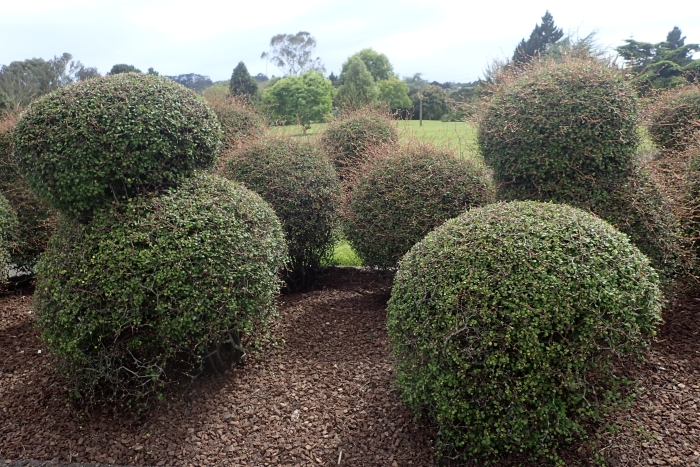Shrubby Tororaro
(Muehlenbeckia astonii)
Shrubby Tororaro (Muehlenbeckia astonii)
/
/

Krzysztof Ziarnek, Kenraiz
CC BY-SA 4.0
Image By:
Krzysztof Ziarnek, Kenraiz
Recorded By:
Copyright:
CC BY-SA 4.0
Copyright Notice:
Photo by: Krzysztof Ziarnek, Kenraiz | License Type: CC BY-SA 4.0 | License URL: https://creativecommons.org/licenses/by-sa/4.0 | Uploader: Kenraiz | Publisher: Wikimedia Commons | Title: Muehlenbeckia_astonii_kz1.jpg | Notes: |



















Estimated Native Range
Summary
Muehlenbeckia astonii, commonly known as Shrubby Tororaro, is a deciduous shrub native to coastal and lowland areas of New Zealand, including dry rocky places, river terraces, and coastal cliffs. It typically grows to a height of 1-2 meters with a similar spread. The plant has a distinctive appearance with small, heart-shaped leaves that are bright green above and pale below, and wiry, interlocking orange-brown branches that provide visual interest even when the plant is leafless. The inconspicuous flowers, which bloom from December to January, are greenish to white or pinkish white and are followed by decorative, translucent fruits that persist from October to June. The seed is a dark, three-sided nut.
Shrubby Tororaro is valued for its drought tolerance, unique form, and ability to thrive in tough conditions, making it an excellent choice for xeriscaping and coastal gardens. It is often used as an informal hedge or sculptural element in the garden, and its ability to tolerate salt spray and wind makes it suitable for seaside plantings. This shrub prefers full sun but can tolerate light shade and is adaptable to a range of soil types, provided they have good drainage. It is also known for its ease of maintenance and can be pruned into shape. However, gardeners should be aware that in rich soils, it may grow vigorously and require staking. Propagation is typically done by winter hardwood cuttings, and it grows well from outcrossed seed. Care should be taken as excessive moisture can lead to root rot, and while generally pest-free, it can occasionally suffer from aphid infestations.CC BY-SA 4.0
Shrubby Tororaro is valued for its drought tolerance, unique form, and ability to thrive in tough conditions, making it an excellent choice for xeriscaping and coastal gardens. It is often used as an informal hedge or sculptural element in the garden, and its ability to tolerate salt spray and wind makes it suitable for seaside plantings. This shrub prefers full sun but can tolerate light shade and is adaptable to a range of soil types, provided they have good drainage. It is also known for its ease of maintenance and can be pruned into shape. However, gardeners should be aware that in rich soils, it may grow vigorously and require staking. Propagation is typically done by winter hardwood cuttings, and it grows well from outcrossed seed. Care should be taken as excessive moisture can lead to root rot, and while generally pest-free, it can occasionally suffer from aphid infestations.CC BY-SA 4.0
Plant Description
- Plant Type: Shrub
- Height: 4-6 feet
- Width: 2-3 feet
- Growth Rate: Moderate
- Flower Color: White
- Flowering Season: Summer
- Leaf Retention: Deciduous
Growth Requirements
- Sun: Full Sun
- Water: Medium
- Drainage: Slow, Medium, Fast
Common Uses
Low Maintenance, Potted Plant, Rock Garden
Natural Habitat
Native to coastal and lowland areas of New Zealand
Other Names
Common Names: Wiggy-Wig Bush, Wiggly Wig
Scientific Names: , Muehlenbeckia astonii,
GBIF Accepted Name: Muehlenbeckia astonii Petrie